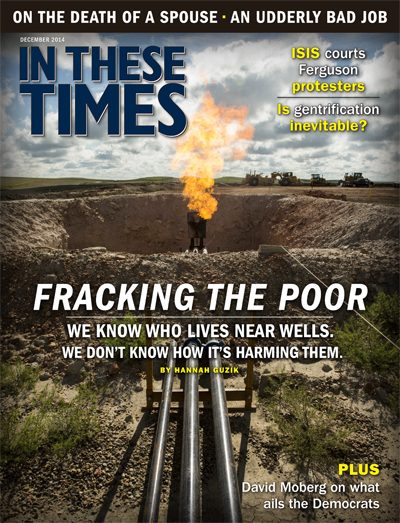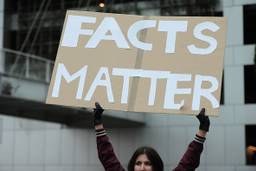The Reporter Who Paid a High Price for ‘Contra Crack’
A new film, Kill the Messenger, shows how the CIA, the Washington Post and the LA Times conspired to discredit a journalist, and destroyed a life.
Jim Naureckas

In Kill the Messenger, Gary Webb, the investigative journalist who exposed the contra-crack connection, is portrayed by Jeremy Renner — most familiar to a mass audience as Hawkeye in The Avengers, but known to film buffs for appearing in gritty, based-on-real-life films like The Hurt Locker and American Hustle. Kill the Messenger, which Renner also co-produced, is in that docudrama genre. More specifically, it recalls films like the 2010 Valerie Plame biopic Fair Game, where the story is not only true, but one that corporate news media would rather you not know. Kill the Messenger is a story about the story that the San Jose Mercury News reporter gave up his career to get out.
The movie opens with historical footage of the war on drugs: presidents from Nixon to Reagan declaring it, Nancy Reagan urging us to just say no, the Partnership for a Drug-Free America comparing our drugged brains to breakfast, news outlets reporting the crack epidemic. A later montage shows footage of the other “war” of the time: speeches about the Cold War, along with shots of the contra war in Central America, in which rebels organized by the CIA attempted to overthrow the socialist government of Nicaragua. (In These Times was one of the few outlets to cover the story while the war was still ongoing; for most in corporate media, the cognitive dissonance was too much to handle.)
As most people who go to see the film will know, Webb’s scoop of a lifetime was drawing a connection between these two major 1980s news stories, so successfully that it’s almost hard now not to think of them together, “contra crack” tripping off the tongue like “French bread” or “English muffins.”
The montages succeed in recalling how weird — and shocking — it originally was that Ronald Reagan’s favorite foreign policy endeavor would be intimately connected with a product so universally demonized.
Having established the real-life context, the film moves on to its fictional depiction of Webb. One of the big questions you want a biopic of Webb to answer is how he nailed a story so many others missed. Renner plays him, naturally, as an old-school muckraker unable to let go of a story once he’s got his teeth into it.
But he’s also portrayed as a guy with a deep well of anger and the ability to focus it at the right targets. (“What about this doesn’t piss you off?” he asks, surveying crack’s devastating impact on an urban neighborhood.) He’s a character who’s willing to break rules — bribing his way into a Nicaraguan prison — and, when he’s frustrated, to break windows. This portrait seems plausible — Webb’s personal recklessness goes a long way toward explaining why he was the one journalist willing to go out on a limb.
His colleagues, especially Mercury News Executive Editor Jerry Ceppos, played by a perfectly cast Oliver Platt, live in a world of cost/benefit analysis: They want to get out as much truth as they can afford to. Webb does not, cannot, make that calculation. He will get the story even if it destroys him, which is why he gets the story and why he is destroyed.
Halfway through the picture, the hunter becomes the hunted: The triumphant publication of Webb’s “Dark Alliance” series in the Mercury News—which established that a key player in the spread of the crack epidemic was getting his raw material from contra-linked drug-runners — provokes a backlash from both journalistic and intelligence establishments.
Here, the film jumps away from Webb’s point of view to show the editorial discussions at two media giants scooped by a paper they would disdain to call a rival. While both the Los Angeles Times and the Washington Post bought into a CIA public affairs campaign to discredit Webb, the Los Angeles Times is portrayed as particularly motivated by stung pride. The paper dedicates a team to gutting the reporter who scored a big story on their turf, devoting more journalistic energy to bringing down Webb than they ever gave to investigating the origins of the cocaine that flooded South Central Los Angeles.
The Post comes across as more of a cat’s paw for the CIA, with one staffer — clearly modeled on longtime Post CIA correspondent Walter Pincus, who worked for the agency’s precursor early in his career — relaying to attentive editors the CIA’s views on how the story should be spun: that Webb was a conspiracy theorist, a fabricator, not to be trusted.
Lest you think this is Hollywood conspiracy-mongering, the CIA’s in house journal published an article, only recently declassified, citing the Post’s Webb takedowns as an example of how to “work with journalists who are already disposed toward writing a balanced story.” CIA public affairs gave out Pincus’ Post articles to other reporters, “helping to create what the Associated Press called a ‘firestorm of reaction’ against the San Jose Mercury News,” in the agency’s words.
Webb’s life did not have the shape of a traditional movie. The forces he antagonized were successful in driving him out of journalism and into a downward spiral that culminated, in 2004, in an apparent suicide. It’s hard to turn that into a feel-good ending.
Instead, the film ends as it begins, with real footage — home movies of Webb horsing around with his kids. It brings home that the life you’ve just seen destroyed was that of a real person — and a real hero.








